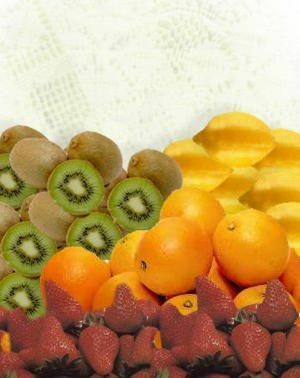Syntactic Structure Example
Spanish Classes / / July 04, 2021
The syntactic structure makes reference to word order, parts of speech, sentences and phrases, to express ideas in a logical and appropriate way, that is, unambiguous or unclear.
The syntactic structure can be understood on three levels: between words, between parts of speech and in the paragraph.
Syntactic structure levels:
At the word level:
Words serve various functions in sentences. There are two types of words that form the syntactic nuclei of the sentence, which are the noun, the nucleus of the subject of the sentence, which refers to the person, animal, thing, idea or place that is spoken, and the verb, which is the core of the predicate and expresses the action or state of the subject.
Around these nuclei other words are placed that serve to determine, specify, describe, indicate the circumstances such as the time, place or state of the words they modify. These words are classified, according to their function in the sentence, in the following:
Articles
Adjectives
Adverbs
Conjunctions
Prepositions
Pronouns
Interjections
Articles. Articles are a type of adjectives, which serve to indicate or specify the noun (determiners). There are definite articles (the, the, the, the) and indefinite articles (one, one, ones, ones). They are always written before the noun or the word they modify:
The home…
A car…
The cat…
Nails fruit…
Adjectives. Adjectives are words that describe, limit or specify the subject or another adjective. There are several types of adjectives that are classified according to their function: Possessives (indicate ownership) Demonstrative (indicate the distance between the speaker and the object) Qualifiers (those who describe some characteristic of the object) Cardinal quantifiers (those that say the number of objects or subjects) Ordinal quantifiers (those that mark the order in a succession), Partitive quantifiers (those that speak of a part or fraction of the object), Indefinite quantifiers (those that modify the subject, but without being specific about its quantity exact).
Possessive, demonstrative, and quantifying adjectives, along with articles, are the type of words called determiners, and they are generally written before the word they modify:
Our pool... (Possessive)
That house... (demonstrative)
Two automobiles… (Cardinal quantifier)
Third cat... (ordinal quantifier)
Half a pineapple… (Partitive quantifier)
Some fruits… (Indefinite quantifier)
Qualifying adjectives are generally written after the noun they modify. When several qualifying adjectives are used for a noun, they are separated by commas, and are mentioned in the form of a list:
That house new
A car old, blue, ramshackle
The cat gray and fat
Some fruits delicious
Adjectives are always written next to the word they modify.
Adverbs: Adverbs modify verbs, adjectives and other adverbs, expressing the circumstances in which they occur. The main types of adverb are those of place, time, mode and quantity. They are written glued to the word they modify:
Quite fast... (adjective)
Walking daily (verb)
Pretty quickly (adverb)
At the prayer level:
At the sentence level, syntactic structure refers to the proper order between the parts of the subject and the parts of the predicate. Between these two parts, the most logical order is that the subject is written first and then the predicate.
Juan (subject) toast dinner (predicate)
The fat gray cat (subject) hunts birds (predicate)
In sentences, the predicate has complements that may or may not be in a sentence, and that also have a certain logical order.
Direct object (O.D): is the person, animal or thing that receives the action performed by the subject. It is written after the verb:
Maria (S) bought (V) flowers (O.D).
The brown dog (S) stole (V) a bone (O.D).
The teacher (S) teaches (V) English (O.D).
Indirect Object (O.I): It is who indirectly receives the action performed by the subject. It is written after the direct object, when there is one, and is connected by a preposition:
Maria (S) bought (V) flowers (O.D) for her mother (O.I).
The brown dog (S) stole (V) a bone (O.D) for her puppies (O.I).
The teacher (S) teaches (V) English (O.D) to the students (O.I).
The teacher (S) teaches (V) to the students (O.I).
Complement circumstance (C.C). It is the complement of the predicate that indicates the place, time or circumstance in which the action of the sentence occurs. It is written next to the structure of the predicate that it modifies, since sometimes it can modify the verb, the direct object, the indirect object or the whole predicate:
María (S) bought (V) flowers (O.D) for her mother (O.I) the weekend (C.C).
The brown dog (S) stole (V) like lightning (C.C), a bone (O.D) for her cubs (O.I).
The teacher (S) teaches (V) English (O.D) basic level (C.C) to the students (O.I).
The teacher (S) teaches (V) the students (O.I) in his house (C.C).
At the paragraph level:
When writing paragraphs, the syntactic structure consists of ordering the ideas in a logical and hierarchical way. To make a proper structure in a paragraph, we must first be clear about the topic and order the ideas main, from the most important to the least important, and then the complementary ideas of each idea. With this we can present and logically order the paragraphs:
Task: write about carnivorous animals.
Main ideas: 1. The characteristics of a carnivorous animal. 2. The main types of carnivorous animals 3. Some species of carnivorous animals.
Secondary ideas: 1.1 why they are called carnivores. 1.2 what other things do they eat. 1.3 where they live. 2.1. Hunters 2.2 Scavengers. 3.1 Canids. 3.2 felines 3.3 birds.
Once the main ideas and secondary ideas have been identified, you can also write other ideas that complement the explanation of the secondary idea, these are complementary ideas. Once identified, we will write the paragraphs. In the paragraph each main idea and secondary ideas are clearly expressed and separated by point and followed, while complementary ideas can be separated by conjunctions, commas, or period and eat:
Carnivorous animals are animals that eat mainly meat (main idea). But they also occasionally consume other foods, such as vegetables, leaves of certain trees or grass, to supplement their digestion (secondary idea). Carnivorous animals are found in almost all natural habitats (secondary idea), even in urban areas (complementary idea).
Examples of syntactic structure in sentences:
- The planes (S) take off (V) every 35 minutes (C.C).
- The study (S) is (V) the main source (O.D) of satisfactions (O.I).
- María (S) does (V) her work (O.D) in an office (C.C)
- Julieta (S) wraps (V) gifts (O.D) for parties (O.I) on weekends (C.C).
- That record (S) sounds (V) bad (C.C)
- Work (S) redeems (V) man (O.I)
- Fish (S) live (V) in water (C.C)
- Chemistry (S) is (V) very interesting (C.C)
- You had (V) the worst idea (O.D) for this job (O.I)
- Wounds (S) will heal (V) soon (C.C)
- My cousins (S) bought (V) apples (O.D) in Irapuato (C.C) for my grandparents (O.I)
- My cat (S) climbs (V) on my shoulder (O.I)
- This repair (S) will be (V) expensive (C.C)
- The nurse (S) cares (V) for the sick (O.D)
- My sister (S) bought (V) last week (C.C) a television (O.D) for her bedroom (O.I)
- Scissors (S) do not (C.C) have (V) sharp (O.D)
- Our house (S) was built (V) last century (C.C)
- María (S) lent me (V) a text mark (O.D)
- The bulb (S) burst (V) due to humidity (C.C)
- Juan (S) printed (V) the list (O.D) for the boss (O.I) yesterday (C.C).
Examples of syntactic structure in sentences in paragraphs:
Carnivores
Carnivorous animals are animals that eat mainly meat (main idea). But they also occasionally consume other foods, such as vegetables, leaves of certain trees or grass, to supplement their digestion (secondary idea). Carnivorous animals are found in almost all natural habitats (secondary idea), even in urban areas (complementary idea).
Carnivorous animals are divided into two types: hunters and scavengers. (main idea). Hunters are the ones who stalk and trap other animals, to consume their meat once dead (secondary idea). Scavengers are animals that look for dead animals or that were abandoned by hunters, and consume the meat, even if it is in a state of decomposition (secondary idea); There are even some animals that can be both hunters and scavengers, depending on the circumstances. (complementary idea).
There are carnivorous animals among mammals, birds and fish (main idea). Among the mammals are canids: dogs, wolves, coyotes, among hunters, and hyenas, among scavengers, and felines, both large cats (tigers, lions, panthers) and small cats (cats domestic) (secondary idea). Among birds, the so-called raptors, such as eagles, hawks and owls, are hunters, and among scavengers, vultures and buzzards (Secondary idea). In aquatic animals we have among the predators piranhas, in fresh water, and sharks in the sea and among scavengers, some killer whales, the tiger shark or slug eels (secondary idea). Even in cities, dogs and cats are carnivorous animals, which despite being domesticated, can sometimes act as hunters and sometimes as scavengers. (complementary idea).



